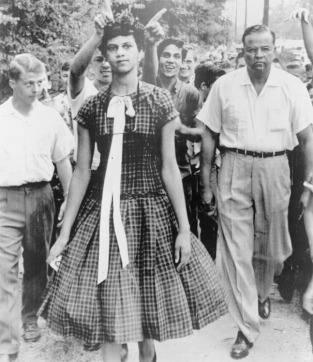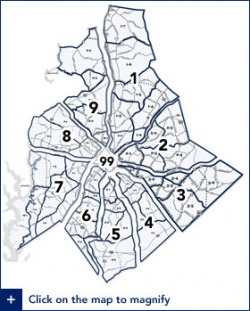Racial segregation, through not entirely unique to the South, has been, and still is, a dominant factor in its political and cultural identity. Education in the South rose from non-formal structures, emerging from the culture, traditions, and institutions of Southern society. Therefore, racial segregation in public education has been a key aspect of Southern identity from the end of the Civil War to the present. Using the Charlotte-Mecklenburg School System (CMS) as an example, it becomes visible how globalization has increasingly led the American South to reaffirm its identity in racial segregation.
After Reconstruction state laws were instituted by the new governments in the South to separate the blacks from the whites to ensure that blacks remained second-class citizens. Unlike other parts of the United States, racial segregation became the law in most parts of the American South through a series of Jim Crow Laws (Lamon 79). These laws were most notable in racially segregated public schools. However, in 1954 the Supreme Court outlawed segregated public education on the basis of race in the famous Brown v. Board of Education case. The new desegregation laws were implemented without much backlash in the United States, with the exception of the American South. Politicians drafted and signed the Southern Manifesto in 1956 which opposed all desegregation in public places and vowed to use all lawful means to bring a reversal to this decision. North Carolina was among the states to sign the Manifesto (Smith 58).
Dorothy Geraldine Counts as she walks to enroll at a formerly all white HS in Charlotte, NC
In the aftermath of the Brown decision, the Charlotte-Mecklenburg School System became integrated but not racially mixed due to the pre-existing geography of the neighborhoods (Smith 76). Federal Court Judge J. Braxton Craven ruled that this was constitutional because intentional racial mixing was not required by law (Smith 61). This decision was later overturned by Judge James B. McMillan, and his decision was unanimously upheld by the U.S. Supreme Court in Swann v. Charlotte -Mecklenburg Board of Education (Smith 72). As a result of this decision, CMS instituted the “Finger Plan” to facilitate racial mixing. This policy partitioned the city into pie-shaped wedges dividing the inner city among different satellite zones (Smith 75).
The Finger Plan
The city of Charlotte experienced a population boom in the late 1980s, which included an influx of people from the Northeast and Midwest. Because busing had never been a necessity for these immigrants, they did not understand the geographic policies that were in place. They were tired of having their children bused to inconvenient locations and sought an end to busing in Charlotte. Judge Robert Potter ruled in 1997 that a unified system had been met in Mecklenburg County and lifted the busing requirement (Smith 112). The city was then divided into four attendance zones based on neighborhoods thereby reinstating segregation in the educational system (Smith 114).
Student populations in Mecklenburg County are now taken from the neighborhoods that geographically surround the schools. This has resulted in a number of high poverty and racially unbalanced schools. By 2004, the number of high poverty schools, with over 75% of the students receiving free or reduced lunch, rose to 50 (Smith 184). The rapid increase in concentrations of poverty prompted Wake County Superior Court Judge Howard Manning Jr. to accuse CMS of “academic genocide” of low-income students. He even went as far as to threaten to shut down four of the lowest performing schools, which incidentally were four of the low income schools (Betts 1P).
In an effort to combat resegregation, CMS has instituted the Family Choice Plan. Under this plan, low-income schools are turned into magnet schools offering International Baccalaureate programs, among others. Families may list their top 3 school choices and are entered into a lottery to attend the schools they listed (Helms, 5B). Even so, wealthy, white families tend to opt to stay at their newer, mostly white home schools. Many black families enter the lottery, which redistributes them to other low-income schools and does not produce the desired effect of racial desegregation (Helms, 5B). In addition, a return to a busing policy becomes less feasible by the day as gas prices continue to increase (Diana 15A).



